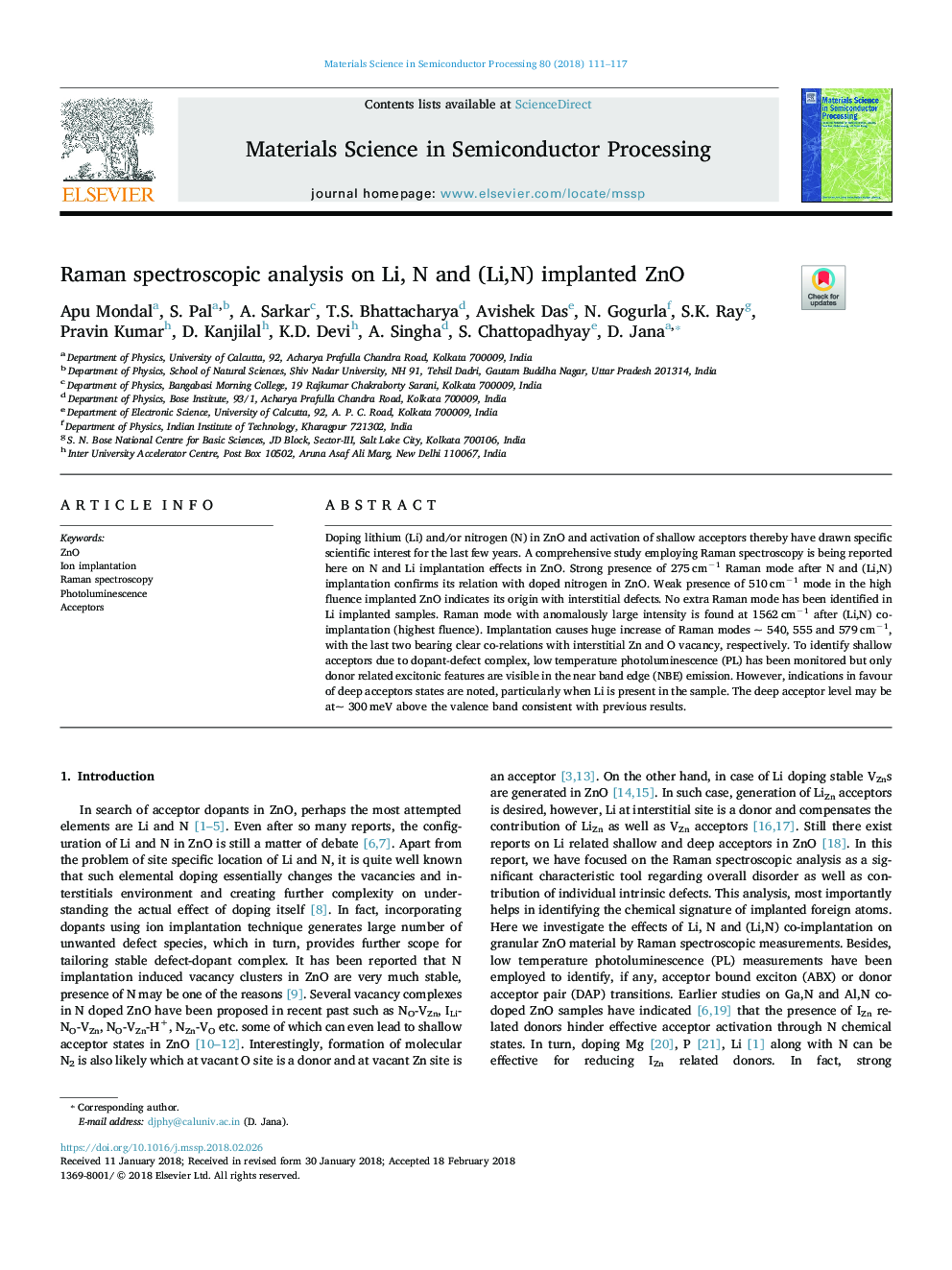| Article ID | Journal | Published Year | Pages | File Type |
|---|---|---|---|---|
| 7117766 | Materials Science in Semiconductor Processing | 2018 | 7 Pages |
Abstract
Doping lithium (Li) and/or nitrogen (N) in ZnO and activation of shallow acceptors thereby have drawn specific scientific interest for the last few years. A comprehensive study employing Raman spectroscopy is being reported here on N and Li implantation effects in ZnO. Strong presence of 275â¯cmâ1 Raman mode after N and (Li,N) implantation confirms its relation with doped nitrogen in ZnO. Weak presence of 510â¯cmâ1 mode in the high fluence implanted ZnO indicates its origin with interstitial defects. No extra Raman mode has been identified in Li implanted samples. Raman mode with anomalously large intensity is found at 1562â¯cmâ1 after (Li,N) co-implantation (highest fluence). Implantation causes huge increase of Raman modes ~ 540, 555 and 579â¯cmâ1, with the last two bearing clear co-relations with interstitial Zn and O vacancy, respectively. To identify shallow acceptors due to dopant-defect complex, low temperature photoluminescence (PL) has been monitored but only donor related excitonic features are visible in the near band edge (NBE) emission. However, indications in favour of deep acceptors states are noted, particularly when Li is present in the sample. The deep acceptor level may be at~ 300â¯meV above the valence band consistent with previous results.
Related Topics
Physical Sciences and Engineering
Engineering
Electrical and Electronic Engineering
Authors
Apu Mondal, S. Pal, A. Sarkar, T.S. Bhattacharya, Avishek Das, N. Gogurla, S.K. Ray, Pravin Kumar, D. Kanjilal, K.D. Devi, A. Singha, S. Chattopadhyay, D. Jana,
